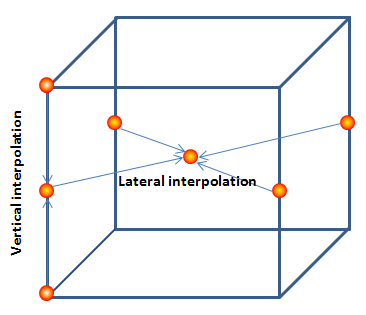To calculate an air parcel trajectory, METEX uses meteorological data for derivation of displacement of the air parcel. The calculation mainly involves spatial and time interpolation to obtain values of meteorological variable at a specific position and time from available data, and involves time integration to estimate the motion of an air parcel. The procedures are outlined as follows:
- Specify the latitude, longitude, altitude, and time as initial conditions.
- Read meteorological data from files whose time intercept the initial time and find the grid box that enclose the given latitude, longitude, and altitude.
- Calculate values of meteorological variables for the same latitude, longitude, and altitude for those times of the two meteorological data files by spatial interpolation using data on the eight corners of the grid boxes.
- Calculate values of meteorological variables for the time and position of air parcel by time interpolation from the two spatially interpolated values.
- Estimate the integration time step based on wind velocity at the time and position obtained by step 4.
- Estimate the new position of the air parcel from wind variables by time integration using the specified calculation model.
- Repeat steps 2 to 6 for a specified period.

